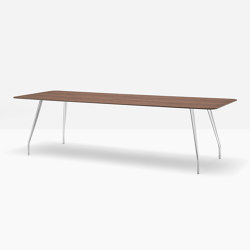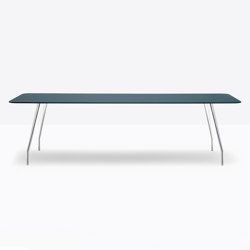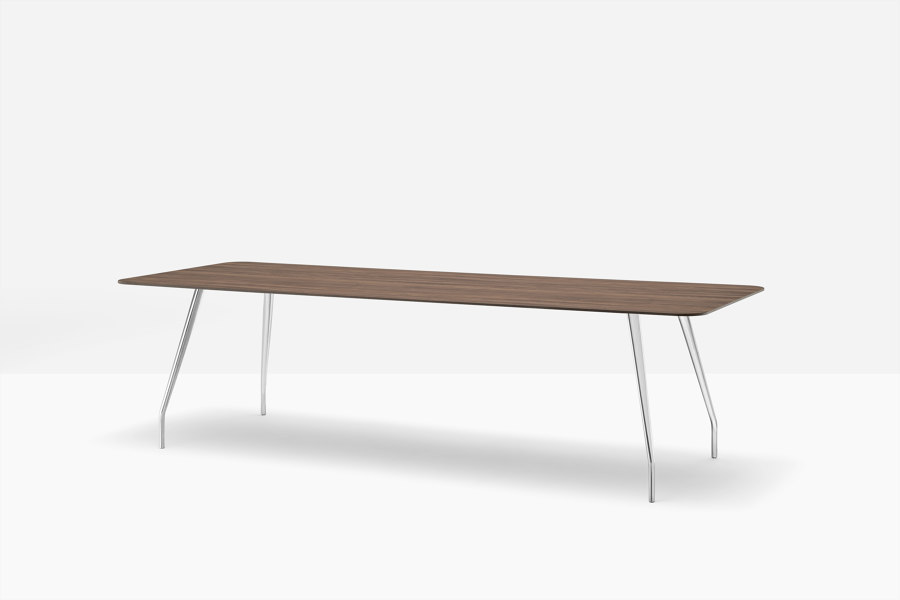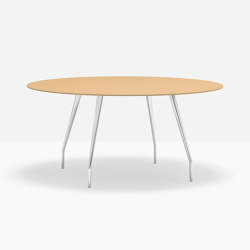‘Tables are the closest thing to architecture’: Robin Rizzini x Pedrali
Brand story by Simon Keane-Cowell
MORNICO AL SERIO (BG), Italie
16.05.24
At this past Salone, Architonic caught up with designer Robin Rizzini to explore his newest piece for Pedrali – Rizz, a sturdy yet light-looking table featuring four aluminum legs that rest elegantly in all kinds of spaces…
Robin Rizzini’s design for Pedrali: Rizz is a table featured by an aluminium frame that ensures strength and lightness at the same time. Photo: Ottavio Tomasini
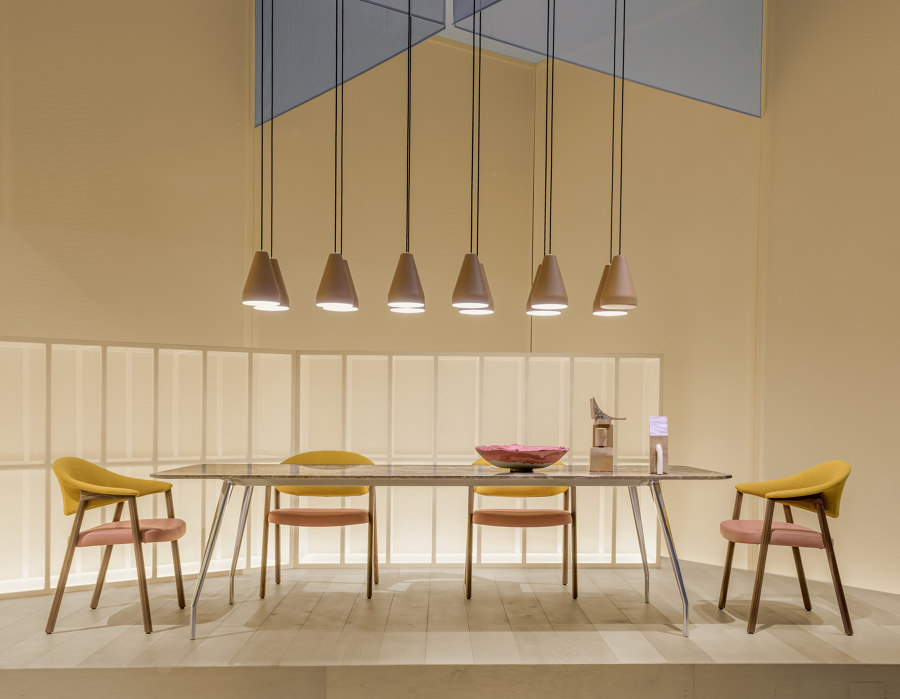
Robin Rizzini’s design for Pedrali: Rizz is a table featured by an aluminium frame that ensures strength and lightness at the same time. Photo: Ottavio Tomasini
×Every now and then something happens that makes me feel old. I don’t mean I’ve-never-heard-of-Taylor-Swift old. I mean the kind of old where you feel you’re no longer down with the kids. (And yes. I realise that’s an expression that an old person would use.)
Take the word ‘rizz’. Those cunning linguists at the Oxford English Dictionary found its nowness so persuasive, they named it word of the year for 2023. I’ll be honest with you. The first time I heard it was last week when I met up with Genoan-born industrial designer Robin Rizzini at the Salone del Mobile Milano.
Meaning charisma or attractiveness, it’s a word that, according to American media outlet NPR, one shouldn’t feel too bad about being unfamiliar with. ‘If you're asking what "rizz" means, you're not alone – particularly if you're a generation or so older than Gen Z,’ they write. ‘But don't feel too left out: there's even a chance that you have rizz without actually knowing what rizz is.’
Genoan-born industrial designer Robin Rizzini designs unique pieces that merge a technical, industrial language with a more decorative one
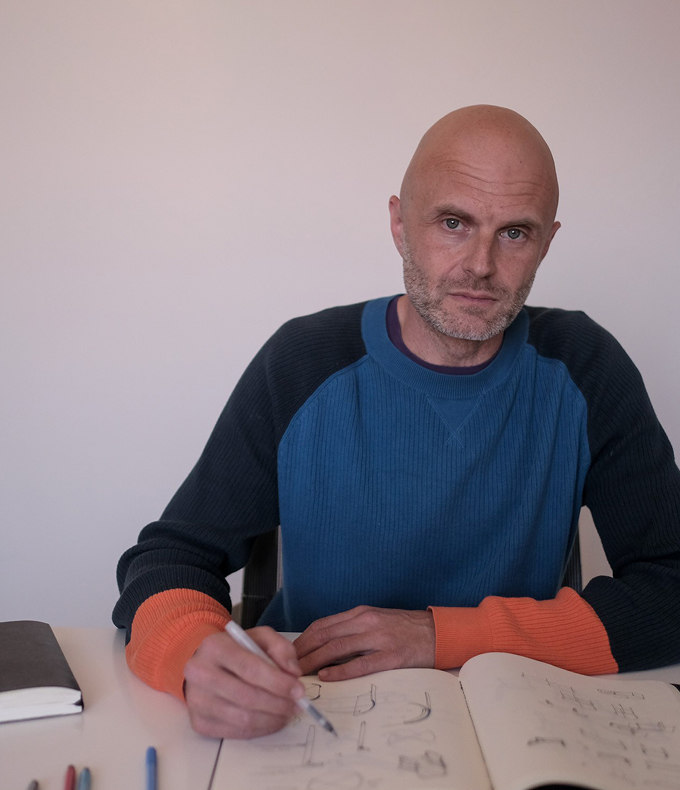
Genoan-born industrial designer Robin Rizzini designs unique pieces that merge a technical, industrial language with a more decorative one
בRizz’ just so happens to be the name of Rizzini’s new table for Pedrali, which has the stuff in spades – and knows it. Yes, it’s a whimsical reference to the designer’s surname, but it’s also a highly apt description of this latest addition to the Italian brand’s robust portfolio of products, hitting as it does the sweet-spot between expression and restraint. I’m not one for superlatives, but it’s a design classic in the making.
‘I always wanted to create the longest, the thinnest table in the world,’ says Rizzini, ‘but it was just a phase. That type of thinking isn’t possible now… It’s not very good for the environment.’
The Rizz table joins Pedrali’s diverse portfolio, making an appearance at this year’s Salone del Mobile. Art Direction: Studio FM, Photo: Andrea Garuti, Set design & Styling: Studio Salaris

The Rizz table joins Pedrali’s diverse portfolio, making an appearance at this year’s Salone del Mobile. Art Direction: Studio FM, Photo: Andrea Garuti, Set design & Styling: Studio Salaris
×Read on for our Milan conversation, where we discuss typology, longevity and the beauty of the underbelly.
…..
Robin, I think I’m right in saying that you’ve been attending the Salone del Mobile for over a quarter of a century.
This is my 26th year here, to be exact.
How has the landscape changed over that time?
Well, ego was always there. And mistakes. Prototypes. Flamboyance. Entrepreneurs. Designers. It was all there. But there’s more money in the system now. And social media has changed everything, of course. But the root is still healthy. The will to do things, to innovate, to think about change. Design is about improving on the existing. Why would you just want to design another chair? There has to be an improvement in materials, in the use of materials, flat-packing, whatever.
Why do you return so often to the table in particular in your design practice?
Tables are the closest thing to architecture. Because of the span. I always wanted to create the longest, the thinnest table in the world. It was a phase. (Laughs.) But then the world changed. That type of thinking isn’t possible now, because to make the longest or thinnest you have to do something that’s not very good for the environment.
The four tapered die-cast aluminium legs are the distinctive design element of Rizz. Art Direction: Studio FM, Photo: Andrea Garuti, Set design & Styling: Studio Salaris
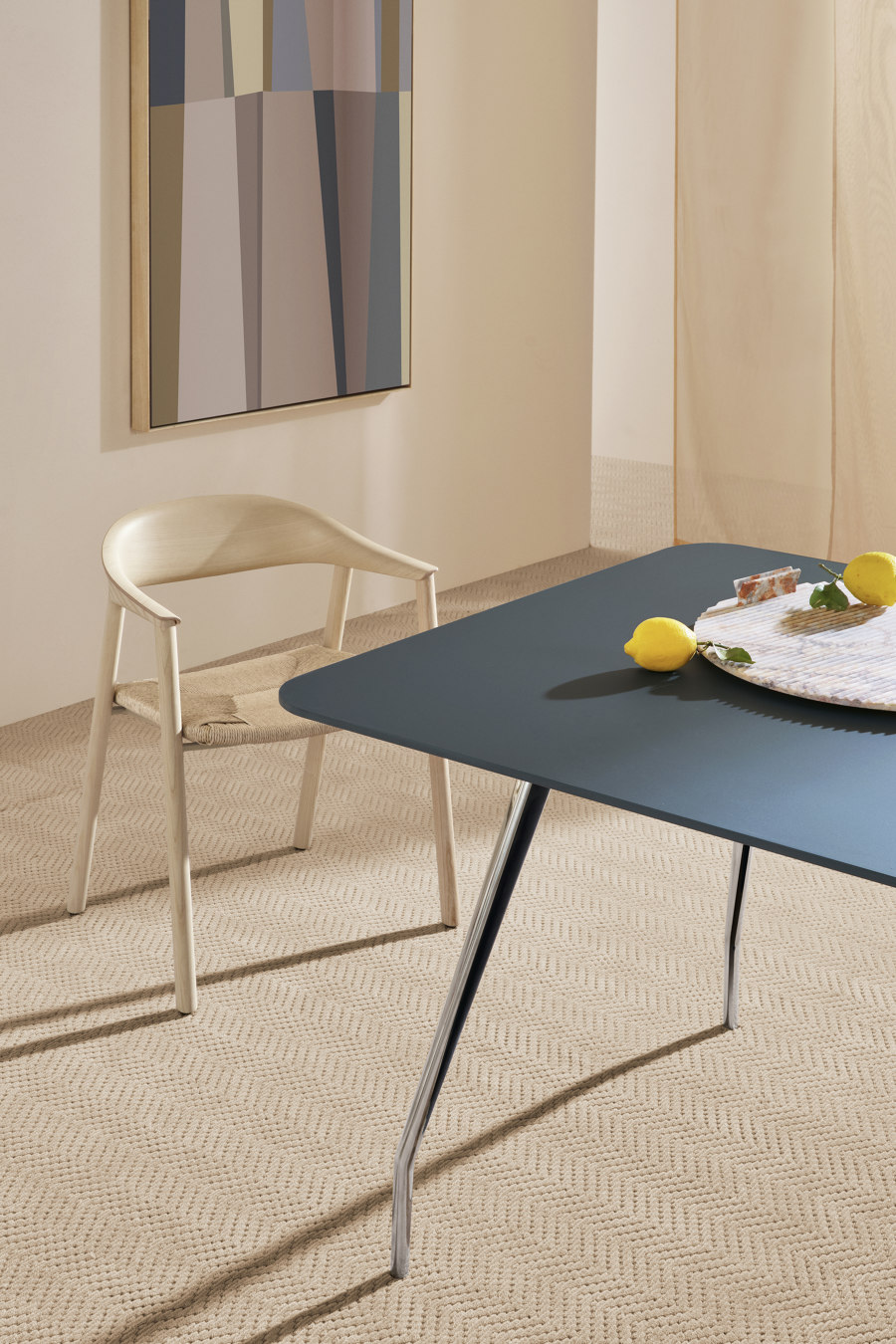
The four tapered die-cast aluminium legs are the distinctive design element of Rizz. Art Direction: Studio FM, Photo: Andrea Garuti, Set design & Styling: Studio Salaris
×If you design a table today, it should to be something that you can separate into every single material and then reuse or recycle. This is why I tend to work with aluminium. It can be upcycled, recycled, transformed into other shapes. And with particular kinds of aluminiums there’s absolutely nothing lost in the recycling process.
So, talk to me about the Rizz table.
Rizz is possibly the most flexible of the three tables I’ve designed for Pedrali. It looks at the residential world as much as the office. But it also suits contract environments. It’s a bit less formal than what you would expect to see in corporate spaces, but still elegant. The aluminium legs are quite thin, but not overly so. There’s a change in section as they taper down. The flat table top can be in many different materials.
Ultimate versatility: round, rectangular or square tops are available, all customisable in different materials
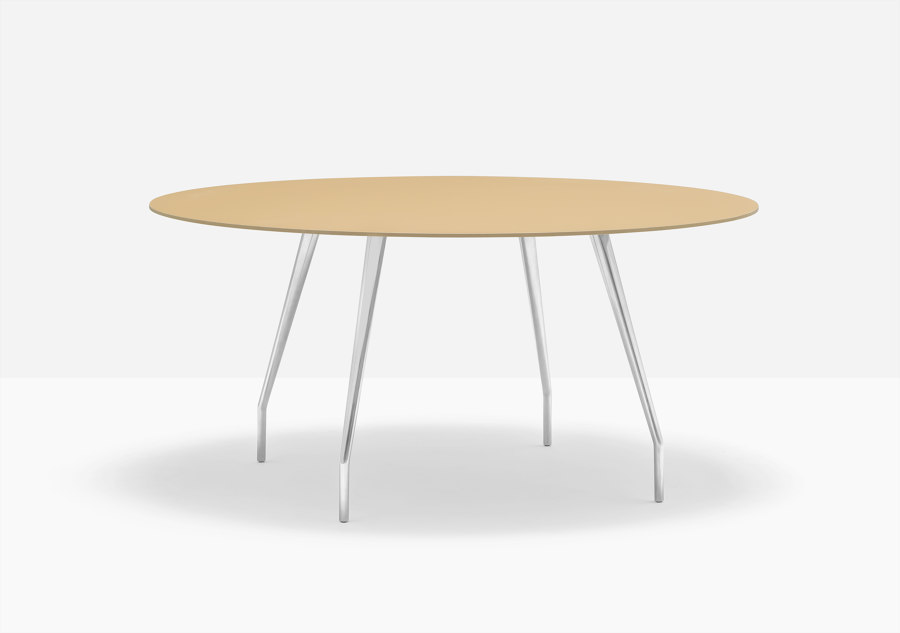
Ultimate versatility: round, rectangular or square tops are available, all customisable in different materials
×It’s extremely light visually. And those angles towards the bottom of the legs, which put me in mind of ankles, lend the table an additional optical levity. As if the table’s a kind of animal, raised up on the tips of its feet, ready to jump.
Congratulations on the underside of the table, Robin. This isn’t something people usually say, but it’s so considered. Why bother about what most of us will never see?
My approach is that nothing is really hidden. A product has to be designed in its entirety. The interesting thing is that we’re using an extruded profile that was already being used for another table. It was a given. That makes sense from an economical and a production point of view. I didn’t have to introduce yet another profile into the environment. I really wanted to do the leg in a way that could embrace that profile while creating a unique-looking structure. But, basically, I like the idea of a table that works from underneath.
Well, it’s an added value for young children, right? Joking aside, products that grow up with families and are passed from one generation to the next are perfect examples of sustainability.
Look, I don’t design many things in a year. I work on my own and am so happy to develop every phase. I can do four or five products every year. And everything that I have designed so far is still, years later, in production. Because, if you put yourself into a product and solve every detail, and you think about the materials and the lifecycle of the product and its quality, it will stay.
© Architonic
Head to the Architonic Magazine for more insights on the latest products, trends and practices in architecture and design.


